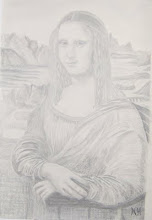Saturday, 16 July 2022
Are light spheres forming the Golden Ratio ϕ, Golden Angle 137.5 and Fib...
In this theory spherical geometry is fundamental and is the reason why the electron e² is squared. This is a very simple process we have to square the radius r² because the process is relative to the spherical 4π surface. Therefore we have the electron e² squared with energy levels from the Sun cascading down relative to the Golden Ratio ϕ forming the golden angle 137.5 and Fibonacci Spiral. This can be seen in the maths with wave function Ψ², electron e² and the speed of light c² all being squared forming the Inverse Square Law of electromagnetism and gravity.
The mathematics of the Golden Ratio is divided into two parts A and B. This can represent the absorption and emission of light photon ∆E=hf energy that forms a process of continuous energy exchange. Mathematically we have to square section A to form the golden rectangle out of section B. If we continuously repeat this process with smaller and smaller rectangles, we form the Fibonacci spiral. And this is exactly what we have within this process in the Subatomic world we have a square in the form of the charge of the electron e² being squared. The spontaneous absorption and emission of light photon energy forms a repetition of the process forming the Golden Angle 137.5 in the form of geometrical self-similarity. The golden ratio - 1.618 – forms the topology of space-time dictate how certain things in the universe take shape. Therefore, we have the Golden Section not only to aspects of mathematics but also in physics, chemistry and biology. We see the Golden Mean in almost everything that is a process over a period of time. This is because the process forms a universal constraint that arises photon by photon as a process of continuous creation. In this way the Divine Proportion or Golden Ratio, represented by the Greek letter phi is a geometrical connection between two aspects of an object as the future unfolds with each new photon electron coupling or dipole moment.
Some people think that our fine-tuned universe is simply a lucky coincidence and, under the multiverse theory, there are an infinite number of other universes that were not quite so lucky. But in this theory luck had nothing to do with it, our Universe is based on simple three dimensional geometry!
I find it odd that Newton or Huygens never came up with the idea of light being a wave with particle characteristics when the absorption and emission takes place. Spherical 4π geometry will naturally form a three-dimensional process (three-dimensional space) that has to be squared r² if the process is relative to the surface of the sphere. This could give us a reason why so much is squared in physics, t², c², e², ψ² and velocity v² as in kinetic Eₖ=½mv² energy. This process would form an uncertain ∆×∆pᵪ≥h/4π future continuously unfolding with the exchange of photon ∆E=hf energy. In addition, it would explain why in Huygens Principle the spheres 4π only move in the forward direction!
Here I have placed links to more videos' explaining this theory.
Double Slit Experiment with the future as an emergent property
https://www.youtube.com/watch?v=MTDwU...
The Delayed Choice Quantum Eraser Experiment Explained
https://www.youtube.com/watch?v=IxATE...
The Schrodinger's Cat Thought Experiment Explained geometrially by a universal process
https://www.youtube.com/watch?v=8BWPz...
The Hard Problem of consciousness solved
https://www.youtube.com/watch?v=7nMS5...
Link to the video: Why is the Universe based on Mathematics
https://www.youtube.com/watch?v=jIr1-...
The video: The temporary nature of everything explained by the Geometry of Phi
https://www.youtube.com/watch?v=Zda_i...
The video: A reason for the Fibonacci Spiral and Golden Mean in Nature
https://www.youtube.com/watch?v=Kt1hO...
Could the Universe use the simplest geometrical shape to form the potential for mathematics?
Could spherical geometry be fundamental to the dynamics of our Universe?
https://www.youtube.com/watch?v=i3mko...
Subscribe to:
Post Comments (Atom)





No comments:
Post a Comment